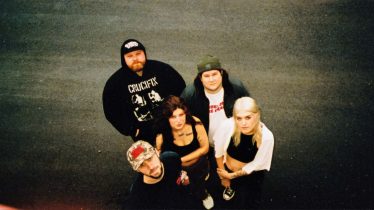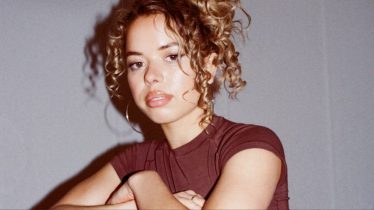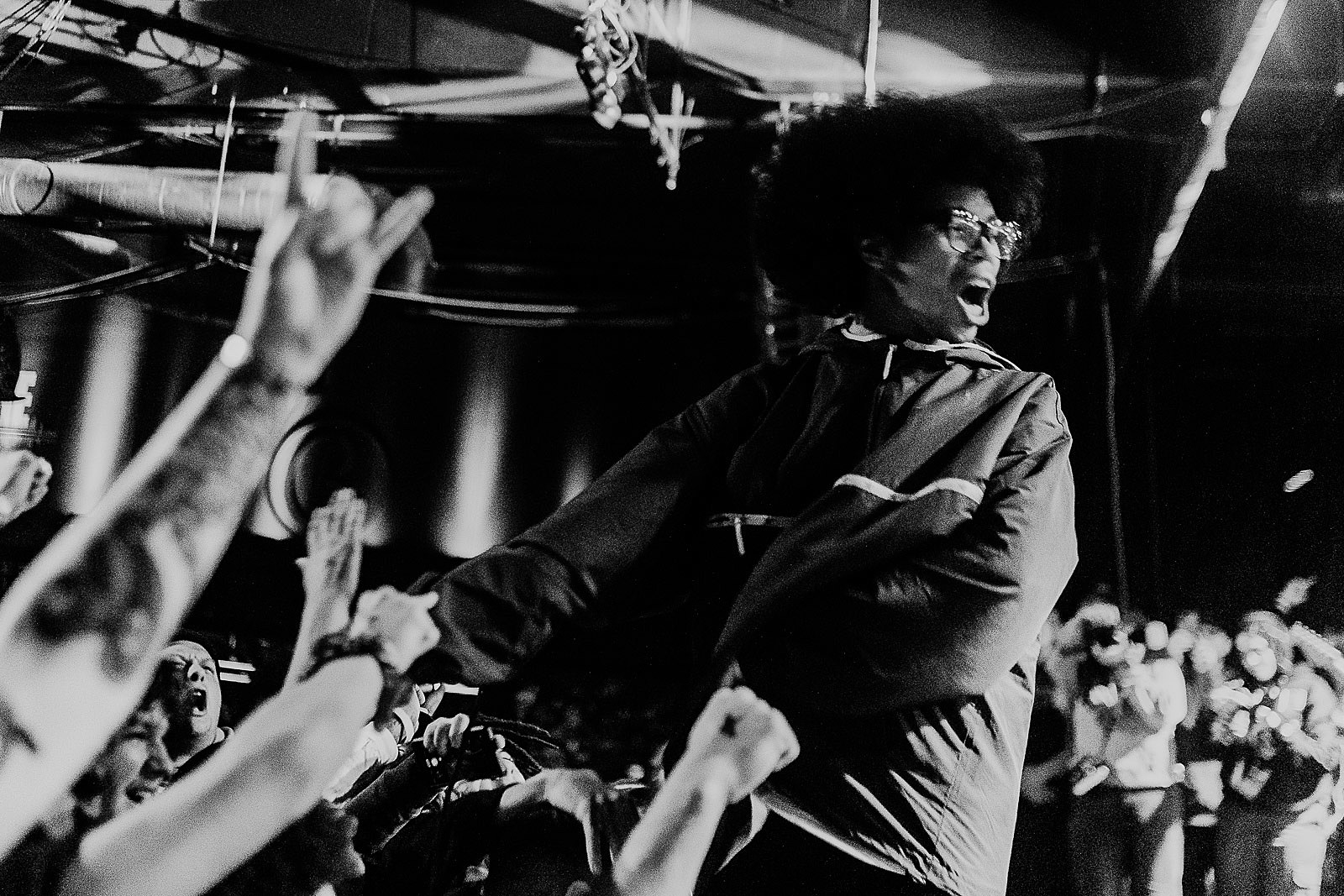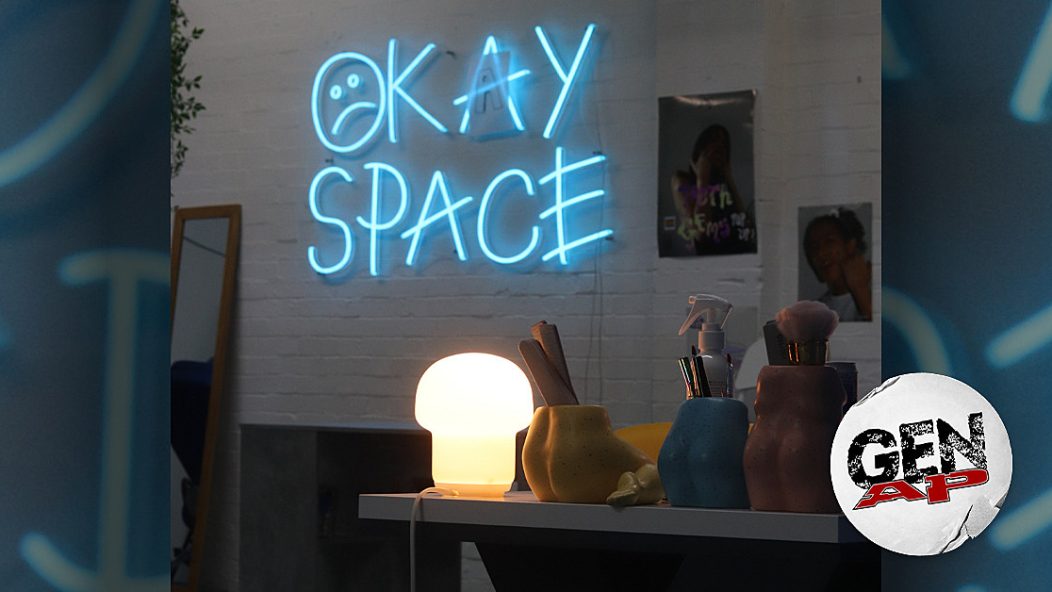
How OkaySpace is creating an inclusive safe haven in the tattoo world
Welcome to Generation AP, a weekly spotlight on emerging actors, writers and creatives who are on the verge of taking over.
In 2022, the tattooing world as we know it is bursting at the seams with innovation. Shows like Ink Master, this season hosted by Good Charlotte’s Joel Madden, have taken the global stages, whereas underground talents are etching out new styles by the minute — talent like Okay Lowry, whose studio OkaySpace in London has become a well-renowned spot for artistic liberation in tattooing and setting the standard for inclusivity in these spaces.
Read more: Good Charlotte’s Joel Madden on hosting the new season of Ink Master and the tattoo artists he loves
Opening in April 2021 in the burrows of the Industrial Estate in North Acton, the shop page boasts a growing following on TikTok and Instagram and has become a routine place for London tattoo enthusiasts. Their outstanding work pivots from conventional tattooing “rules” and puts the heart of creativity at the forefront of every project. It’s this, paired with their strong attitudes on creating a safe space in an industry that hasn’t had the best reputation for stamping out discrimination, that makes them a growing cult favorite. We sat down with the owner and founder Lowry, who explains how they went from not being able to draw at all to building their own mini empire.
When did you first get into the tattoo world? Was there anything, in particular, that made you really want to dive in?
I first got into the tattoo scene almost six years ago now. I got an apprenticeship at a pretty old-school biker tattoo shop near where I grew up in Birmingham, a real far cry from my shop now, but I’m super grateful for my time there. Since I was 15, I thought tattooing was the coolest job in the world, but the idea that I’d ever be a tattooer myself seemed so out of the question. I’d never done art of any description. I taught myself to draw when I was 22 with the express intention of becoming a tattooer. Ultimately, I knew I wanted to be self-employed, and after having a “What am I doing with my life?” moment, I decided to just throw everything I had into trying to become a tattooer. [I spent] time with a few questionable “artists” and thought, “If they can do this, I surely can.” I was making like £8 an hour in a managerial role, and they were making £100s a day doing something they loved. [It] seemed so wild to me back then.
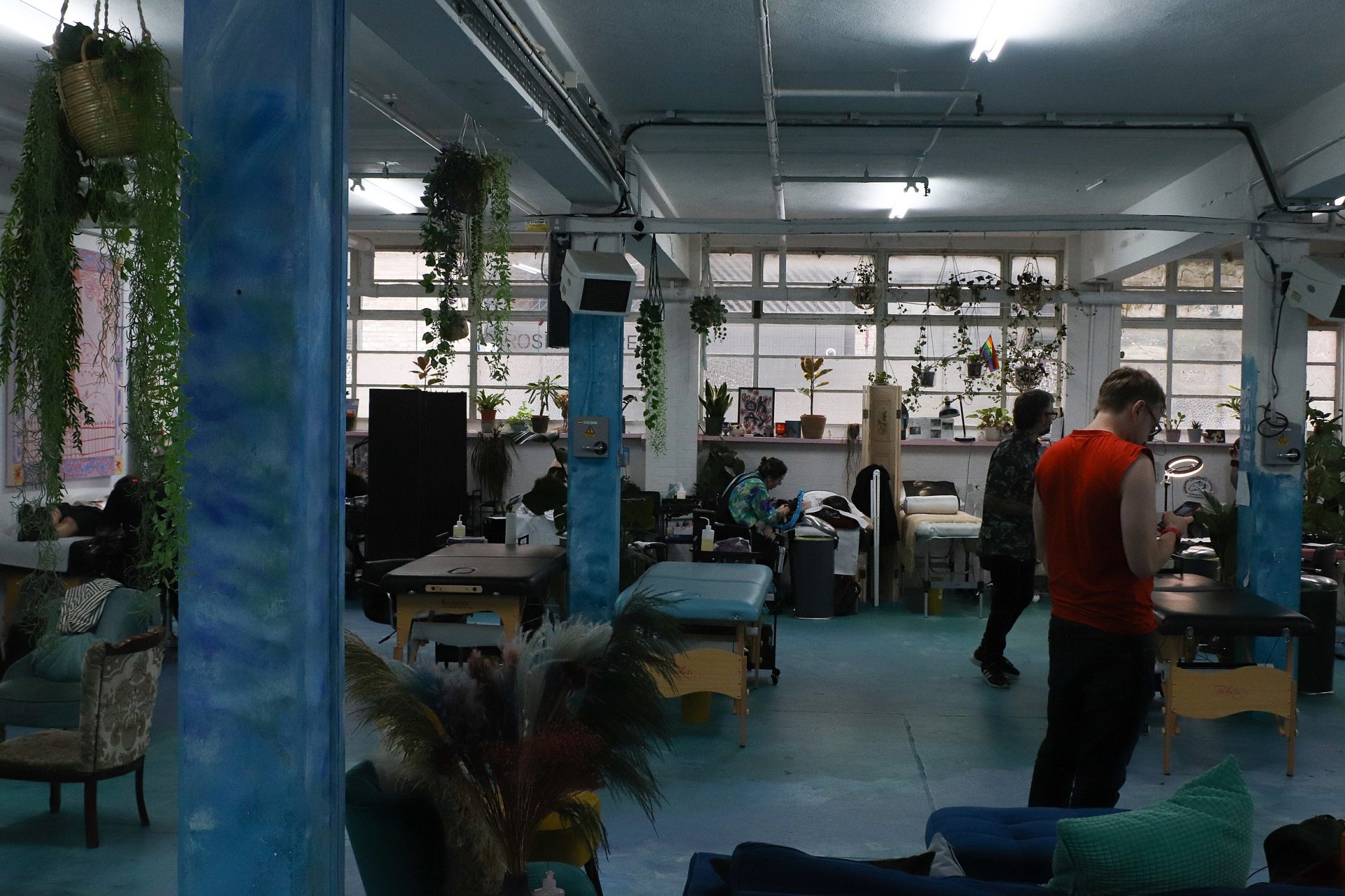
[Photo by Ikaay Ebi]
When you first started out, did you ever anticipate that this is where you’d be?
No way. Everything I do, especially now, I do with the intention that it’s gonna be the best and biggest thing ever, but I did not take to tattooing easily. I must have rage-quit about 20 times during my apprenticeship. I wasn’t used to not being good at something right away, honestly, and I was working in a small town where I quite literally couldn’t give my art away. I always wanted a situation like what I have now, but I think if myself back then could see me now, they’d be pretty shocked and impressed.
Could you tell us more about your art style and what inspires it currently?
My art style is definitely ever-changing. The better I get at tattooing, the more I try to challenge myself. I’d describe my current work as fine line, mixed texture blue work.
The reason so many have taken such an interest in your work is that it’s the opposite of traditional tattooing styles, not that following those matters anyway. Have you had much backlash from old-school artists or tattooed folk who think this new style isn’t “good enough”?
It’s not something I’ve experienced a bunch, as I’ve been fairly lucky that I haven’t worked in many shops before opening my own. I was working in a shop a few years ago right after I moved to London, and I definitely felt like my work wasn’t taken seriously. I was the only woman who worked there with a bunch of men about 10 years my senior, but their opinion of me didn’t matter much as I was booked and busy, and they were committed to their old ways while selling tattoos on Groupon. Since I found my style in tattooing, I’ve become fairly confident in my work, so even the occasional comment doesn’t bother me — these are coming from old men scared of change and jealous of young artists coming up quicker without having to undergo a traumatic apprenticeship.
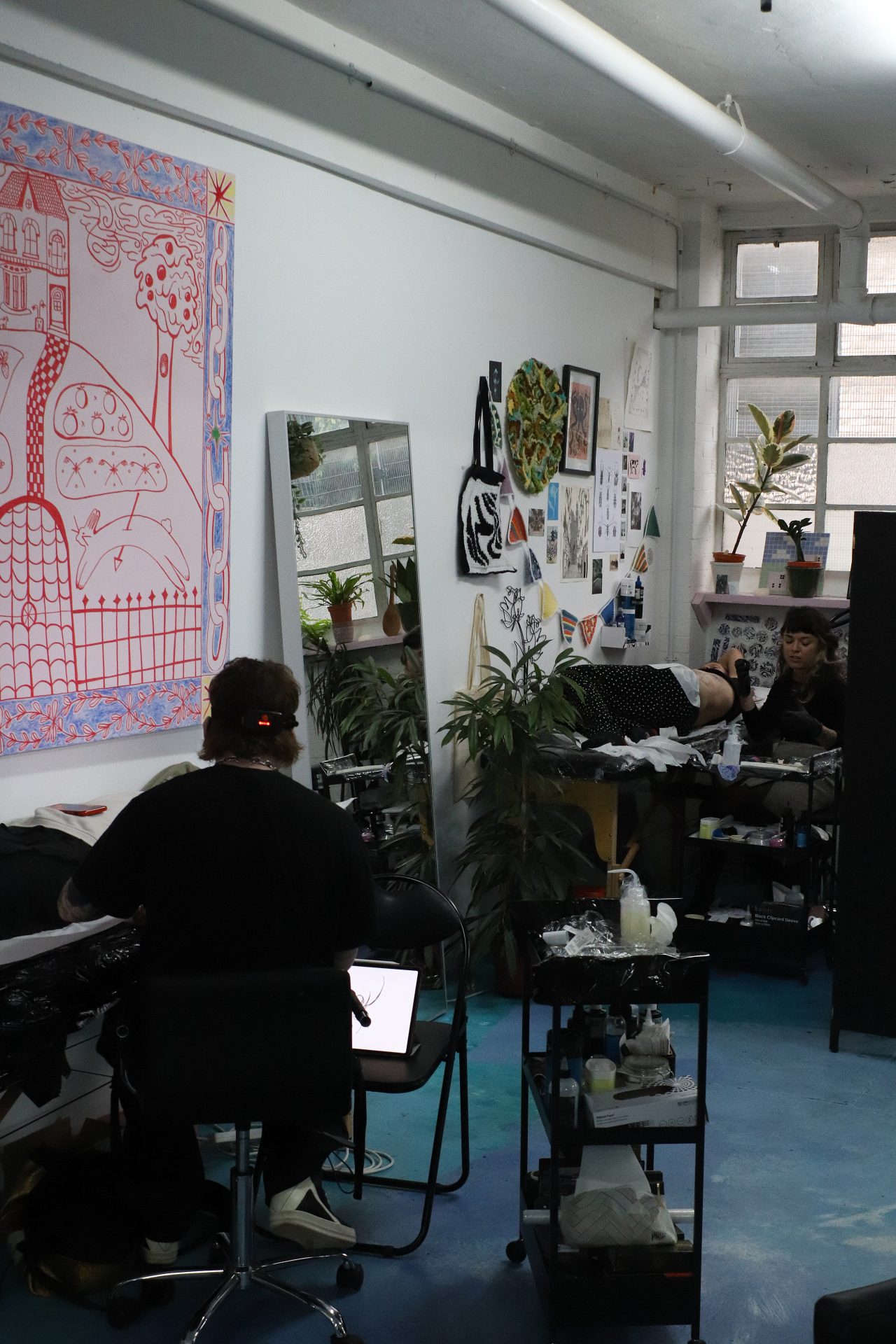
[Photo by Ikaay Ebi]
The tattooing world used to be a very male-dominated space and is still fighting to stray away from those old ways. Your studio offers a safe space for everyone. Is that something that was important to you starting out?
To be honest, when I opened my first studio, it was just a creative venture with the hope I’d make a bit of extra money in the process, but I knew myself and what I could offer people. A queer, female-owned studio is a bit of a rarity, and I wanted to fill it with people like myself, or who I could relate to and also learn from. I knew what was important to me and my values, and I’ve worked really hard to instill them in every corner of my studio, the team I work with, the artists and especially my shop manager Yaz have helped me build OkaySpace into much more than just a tattoo studio. I feel like it’s a community space. It’s become way bigger than me, and that’s way more than I could have hoped for. I’m proud of us all.
Gatekeeping by the men that have dominated this industry for years has built a layer of intimidation between the customer and their artist, which in turn has led to customers being exploited, in many ways. A lot of people now, not just us, are working to create an open dialogue between tattooers and their customers/following to dispel myths and misinformation, which lead to the fear of going to a tattoo shop and questioning your artist in any way. Tattooing is a customer service job like many others. We need to bring the customer service element back into the forefront.
Speaking of, you tattoo on a diverse range of skin tones and textures. There’s still some conflict within the tattoo industry about studios not offering this enough. Is it hard for tattoo artists to tattoo on different tones/textures, and why is this not common practice to offer services for all?
If you’re not offering your work to every skin tone, you’re lazy and discriminatory. I understand that some styles do not lend themselves so easily to an array of skin tones. However, the answer should be to create a color palette for those tones — not exclude them from your customer list. There’s a reason I still offer my blue work in just about every other color because I understand that the shades I draw in might not work for everyone’s skin tone, and refusing to work with people based on their skin color is wild. Where else can you do that? Nowhere, it’s racism. I’ve said that before and been called out for it, but it’s what I believe, and I’ll stand by it. If you’re not willing to put in a bit more effort to make your work accessible [and] you’d rather exclude people based on their skin tone, you shouldn’t be a tattooer. It’s not harder to tattoo different skin tones — just different. When I was doing my apprenticeship, I was never even told there was any debate in this field, so I was tattooing everyone back then, too, no issues.
@okayspacelondon which one’s your favourite ? 🤠💙 all done at #OkaySpaceLondon #okayspace #tattoo #tattooartist #londontattooartist #queertattooartist
♬ The People using my sound have more likes than me – Geometry Fox
I’ve also tattooed people with skin disorders/issues that make them actually a touch more difficult to tattoo. I just do my research beforehand, start small and always offer free touch-ups as needed. It’s accessibility, something I think is very important, especially in this field.

